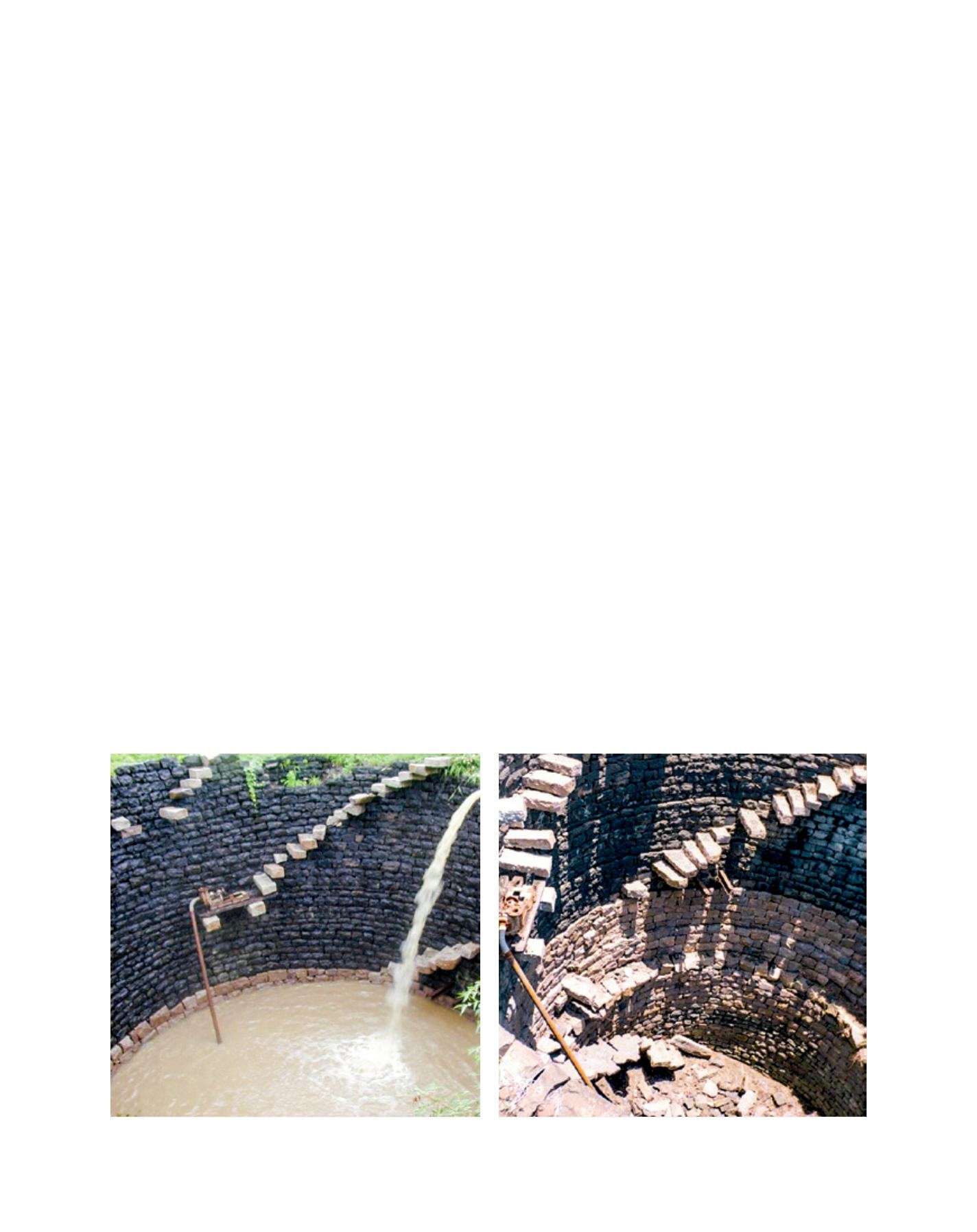

[
] 125
ventions to tackle frequently occurring droughts affecting
dryland agriculture since 1970. ICRISAT and its part-
ners developed Vertisol management technology using a
watershed management approach in 1976 and took it for
on-farm demonstrations during the 1990s but, although
economically remunerative, the technologies weren’t
adopted by farmers. Based on the lessons learned from
different evaluation studies of conventional watershed
management programmes in India, in 1998 an integrated
farmer-centric watershed model adopting an Integrated
Genetic and Natural Resource Management (IGNRM)
approach was developed and piloted to address tangi-
ble economic benefits to smallholders, ownership of the
interventions, women’s involvement, enhancing collective
action, and technical backstopping ensuring knowledge
sharing.
6
ICRISAT later adopted the Inclusive Market
Oriented Development (IMOD) strategy to link small
farmers to markets and ensure profits through innovative
collective action using new information and communica-
tion technologies. The IGNRM and IMOD pillars harnessed
the potential of crops, livestock, poultry, fisheries, trees
and value-adding microenterprises, linked production and
markets to benefit smallholders and transformed their lives
through an integrated approach.
7
Many partners are engaged with farmers and co-invest
their knowledge, technologies and practices to address key
constraints that farmers face as suppliers. This initiative was
initially supported by the Asian Development Bank for pilots
in India, Thailand, Viet Nam and China. Later, development
investors such as the Indian Ministry of Rural Development,
the World Bank through the Sujala Watershed Program in
Karnataka, the Department for International Development
through the Andhra Pradesh Rural Livelihoods Program, the
Sir Dorabji Tata Trust and the Sir Ratan Tata Trust supported
further refinements and scaling-up in India.
Identifying a suitable entry point activity (EPA) for
promoting collective action and gaining the trust of the
community is critically important. The EPA must be
knowledge-based rather than cash-based to benefit large
numbers of community members. Based on close study of
the constraints, suitable EPAs were identified for increasing
productivity quickly, as in Adarsha watershed, Kothapally
in India, or addressing a major common need such as
drinking water in Lucheba watershed in China.
8
Adarsha watershed, India
In 1998/99 Kothapally village in the Shankarpally mandal
of Ranga Reddy district in Telangana (previously Andhra
Pradesh) was a village with little development and no
transport facilities. Eighty per cent of its 462 hectares of
agricultural land was rain-fed, growing one crop per year.
The main crops were cotton, maize, sorghum and pigeon-
pea with 1-1.5 t ha
-1
productivity of sorghum and maize
and 200 kg ha
-1
of pigeonpea. All the 62 open wells were
dry from January onwards and village women had to travel
2-3 km to fetch drinking water from February until the
June-July monsoon rains. Milk production was low and
there was little surplus milk to sell. Smallholders were
migrating to the city for livelihood during the off season.
In 1999, at the request of the district administrator
and the government Drought Prone Area Programme,
the ICRISAT team selected Kothapally for drought-proof-
ing with improved technologies based on the severity
of water scarcity, large rain-fed area, low crop yields,
poverty and the willingness of the community to work
together. ICRISAT brought the partners together with the
Government of Andhra Pradesh, MV Foundation (a non-
governmental organization operating in the district), the
Central Research Institute for Dryland Agriculture and the
National Remote Sensing Agency in a consortium.
Open wells in Kothapally before watershed scenario and after, with recharge pits
Images: ICRISAT
D
eep
R
oots
















